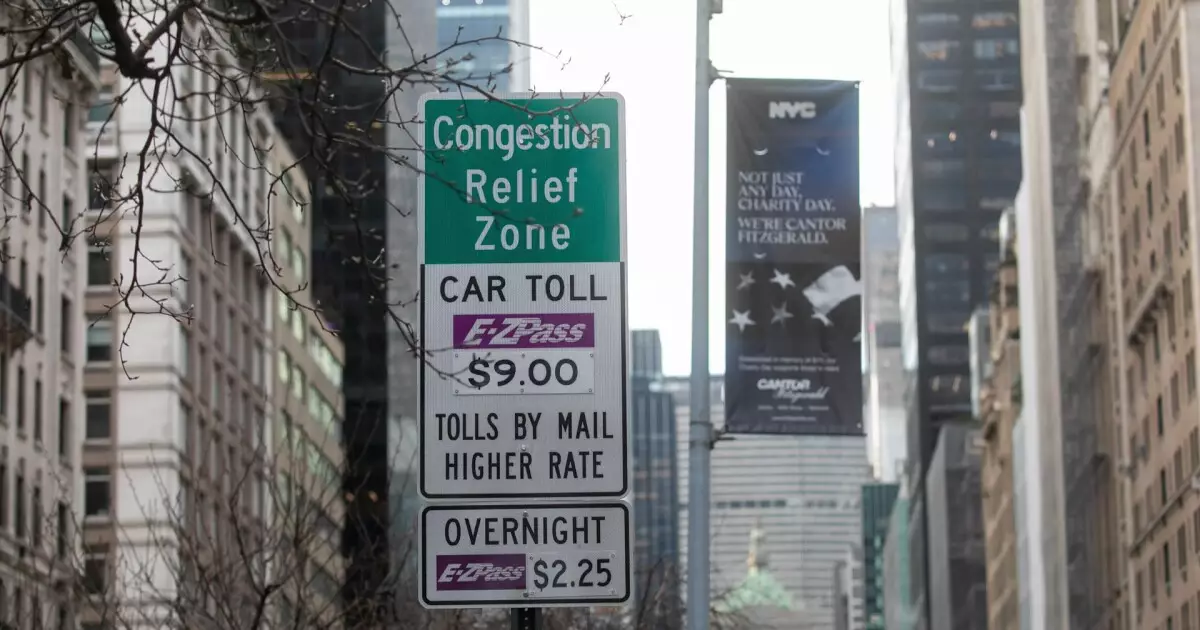On Sunday, the New York Metropolitan Transportation Authority (MTA) embarked on a momentous journey by implementing congestion pricing for vehicles entering lower Manhattan. This policy marks a defining moment for the city and is significant as New York becomes the first U.S. city to levy tolls aimed explicitly at reducing urban congestion. For years, congestion pricing has been a contentious issue, plagued by legal challenges and political hesitations, yet its launch may well reshape the urban landscape and set a precedent for other cities grappling with similar issues.
The path to this milestone has been anything but smooth. The congestion pricing proposal was initially put forth by former Mayor Michael Bloomberg in 2007 but did not gain genuine traction until 2017, during a period infamously dubbed the “Summer of Hell,” when transit woes became glaringly visible to the public. A breakthrough came in 2019 when the state assembly approved the notion as part of a larger strategy to fund the MTA’s vital capital projects over the next several years.
Yet, the journey was further complicated by political pushback and lawsuits—challenges that ultimately stalled the initiative. Most notably, Governor Kathy Hochul halted the pending tolls just weeks prior to their initial launch date in June. This interruption highlighted the fragility of political will surrounding urban transport reforms. However, with a renewed commitment, the program was revived later in 2023 with a revised toll structure, setting the base rate at $9, significantly lower than the previously proposed $15.
The congestion pricing initiative encompasses the deployment of a comprehensive system designed to monitor traffic flow and enforce toll collection. With 1,400 cameras and over 800 traffic signs strategically placed at 400 lanes of traffic, the MTA aims for a seamless transition into this new phase in urban mobility. MTA CEO Janno Lieber expressed optimism about the program’s smooth commencement, while also urging commuters to reconsider their reliance on personal vehicles in favor of public transportation, which promises greater efficiency and less environmental impact.
The overarching goal of this program extends beyond mere revenue generation. The congestion pricing is intended to alleviate pollution levels and reduce traffic congestion, with projections suggesting that around 80,000 fewer vehicles will enter the designated “Congestion Relief Zone” daily. The revenue generated from this initiative is earmarked to support $15 billion in bonds, aimed at bolstering the MTA’s infrastructure and capital projects.
Despite the initial success, the congestion pricing plan still grapples with numerous legal hurdles. Several lawsuits, including attempts from New Jersey to halt the tolls, are currently making their way through the courts. Fortunately for New York, a recent lawsuit from New Jersey was dismissed, though the state is in the process of appealing the ruling. Governor Hochul labeled the outcome a victory for New York, reiterating that the state’s legal position has remained strong amid these challenges.
The apprehension surrounding potential legal repercussions and the earlier pause in the program have made the MTA cautious in its fiscal planning. CFO Kevin Wilens outlined that the revenue generation may need adjustments in terms of bond issuance strategy, emphasizing a careful approach that considers the anticipated revenue influx over time. As the program is phased in, adjustments to toll rates can also occur, with incremental increases anticipated by 2028 and 2031.
As the congestion pricing initiative takes effect, New York City stands at a crossroads, poised to redefine urban mobility in the 21st century. While challenges remain, both legal and operational, the potential benefits in terms of reduced traffic congestion and environmental impact could serve as a model for cities worldwide. The impetus to adapt to sustainable urban transport solutions is more critical now than ever, and New York’s venture into congestion pricing represents a significant leap forward in addressing the complex issues of modern urban living. Only time will tell how effectively this bold initiative will reshape the habit of commuting in one of the largest cities in the world.

